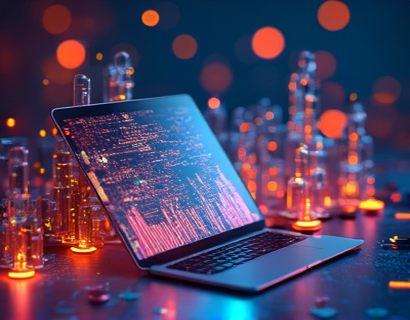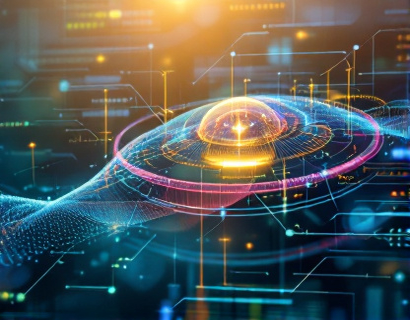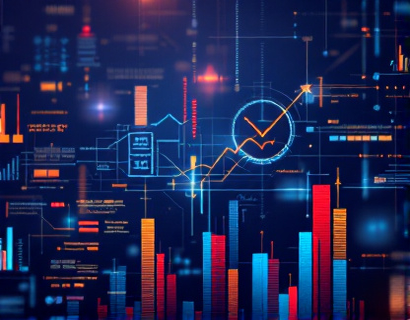Elevating Digital Experiences: The Synergy of AI and Crypto
The intersection of artificial intelligence and cryptocurrency is paving the way for unprecedented advancements in digital experiences. This fusion is not just about combining two cutting-edge technologies but about creating a new paradigm where interactions are more intuitive, secure, and personalized. As tech enthusiasts and innovators, understanding this synergy is crucial for anyone looking to stay ahead in the rapidly evolving landscape of connected technologies.
The Role of Artificial Intelligence in Crypto
Artificial intelligence plays a pivotal role in the cryptocurrency space by enhancing security, improving user experience, and optimizing trading strategies. AI algorithms can analyze vast amounts of data to detect patterns and predict market movements with a level of accuracy that traditional methods cannot match. This predictive capability is invaluable for traders and investors seeking to make informed decisions.
Moreover, AI-driven security measures are revolutionizing how cryptocurrencies protect against fraud and cyber threats. Machine learning models can identify suspicious activities in real-time, enabling quicker responses to potential breaches. Smart contracts, a cornerstone of blockchain technology, benefit immensely from AI as they can automate and enforce contractual obligations with precision and without the need for intermediaries.
Personalized User Experiences
One of the most exciting aspects of integrating AI with cryptocurrency is the potential for highly personalized user experiences. AI can analyze user behavior and preferences to tailor recommendations, from investment strategies to product offerings. This level of personalization not only enhances user satisfaction but also fosters a deeper connection between users and the digital platforms they interact with.
For instance, AI-powered chatbots can provide 24/7 customer support, answering queries and guiding users through complex processes with ease. These chatbots can learn from interactions, improving their responses over time and offering a more human-like experience. This not only reduces the burden on human support teams but also ensures that users receive timely and accurate assistance.
Enhanced Security Through AI
Security remains a paramount concern in the crypto world, and AI is at the forefront of addressing these challenges. Advanced AI algorithms can monitor transactions and network activities continuously, identifying anomalies that may indicate fraudulent behavior. This proactive approach to security helps in mitigating risks and building trust among users.
Biometric authentication, powered by AI, is another significant advancement. Fingerprint and facial recognition technologies ensure that only authorized users can access their accounts, adding an extra layer of security. This is particularly important as the value of cryptocurrencies continues to rise, making them a prime target for cybercriminals.
Decentralized Applications and AI
Decentralized applications (dApps) are gaining traction, and AI is enhancing their functionality and user engagement. dApps leverage blockchain technology to provide decentralized services, and when combined with AI, they become even more powerful. AI can optimize the performance of dApps by managing resources efficiently, predicting user needs, and automating tasks.
For example, AI can be used to improve the user interface of dApps, making them more intuitive and user-friendly. By analyzing user interactions, AI can suggest design changes and feature additions that enhance the overall user experience. This continuous improvement cycle ensures that dApps remain relevant and competitive in a fast-paced market.
Tokenization and AI
Tokenization, the process of converting assets into tokens on a blockchain, is another area where AI can add significant value. AI can help in assessing the value of assets to be tokenized, predicting market trends, and optimizing the distribution of tokens. This ensures that tokenization projects are more successful and attract the right investors.
Moreover, AI-driven platforms can facilitate the creation and management of tokens, automating processes such as minting, trading, and distribution. This not only reduces the complexity for users but also increases the efficiency of token-based ecosystems.
Future Prospects: AI and Crypto Convergence
The future of AI and crypto integration holds immense potential. As technology advances, we can expect even more sophisticated applications that blur the lines between traditional finance and decentralized systems. The convergence of these technologies will likely lead to the development of new financial instruments, enhanced trading platforms, and innovative use cases that were previously unimaginable.
One area to watch is the integration of AI in decentralized finance (DeFi) platforms. AI can optimize lending and borrowing processes, manage risk more effectively, and provide personalized financial advice to users. This could democratize access to financial services, making them more accessible to a global audience.
Another exciting prospect is the use of AI in enhancing the scalability and interoperability of blockchain networks. AI can help in designing more efficient consensus mechanisms and facilitating seamless interactions between different blockchain platforms. This will be crucial for the widespread adoption of blockchain technology across various industries.
Challenges and Considerations
While the integration of AI and crypto offers numerous benefits, it also comes with its own set of challenges. One of the primary concerns is the regulatory landscape. As both AI and crypto operate in relatively uncharted territories, regulatory frameworks are still evolving. Ensuring compliance while innovating is a delicate balance that stakeholders must navigate carefully.
Another challenge is the technical complexity involved in integrating these technologies. Developing robust AI models that can operate efficiently on blockchain networks requires expertise in both domains. Collaboration between AI researchers and blockchain developers will be essential to overcome these technical hurdles.
Privacy is also a critical consideration. While AI can enhance security, it also raises concerns about data privacy. Ensuring that user data is handled ethically and transparently is paramount to maintaining trust in these systems.
Conclusion
The synergy between AI and crypto is transforming the digital landscape, offering unprecedented opportunities for innovation and growth. By leveraging the strengths of both technologies, we can create more secure, personalized, and efficient digital experiences. As we move forward, it is essential to address the challenges and continue exploring the vast potential of this powerful combination. For tech enthusiasts and innovators, the future is bright, and the journey has just begun.











































